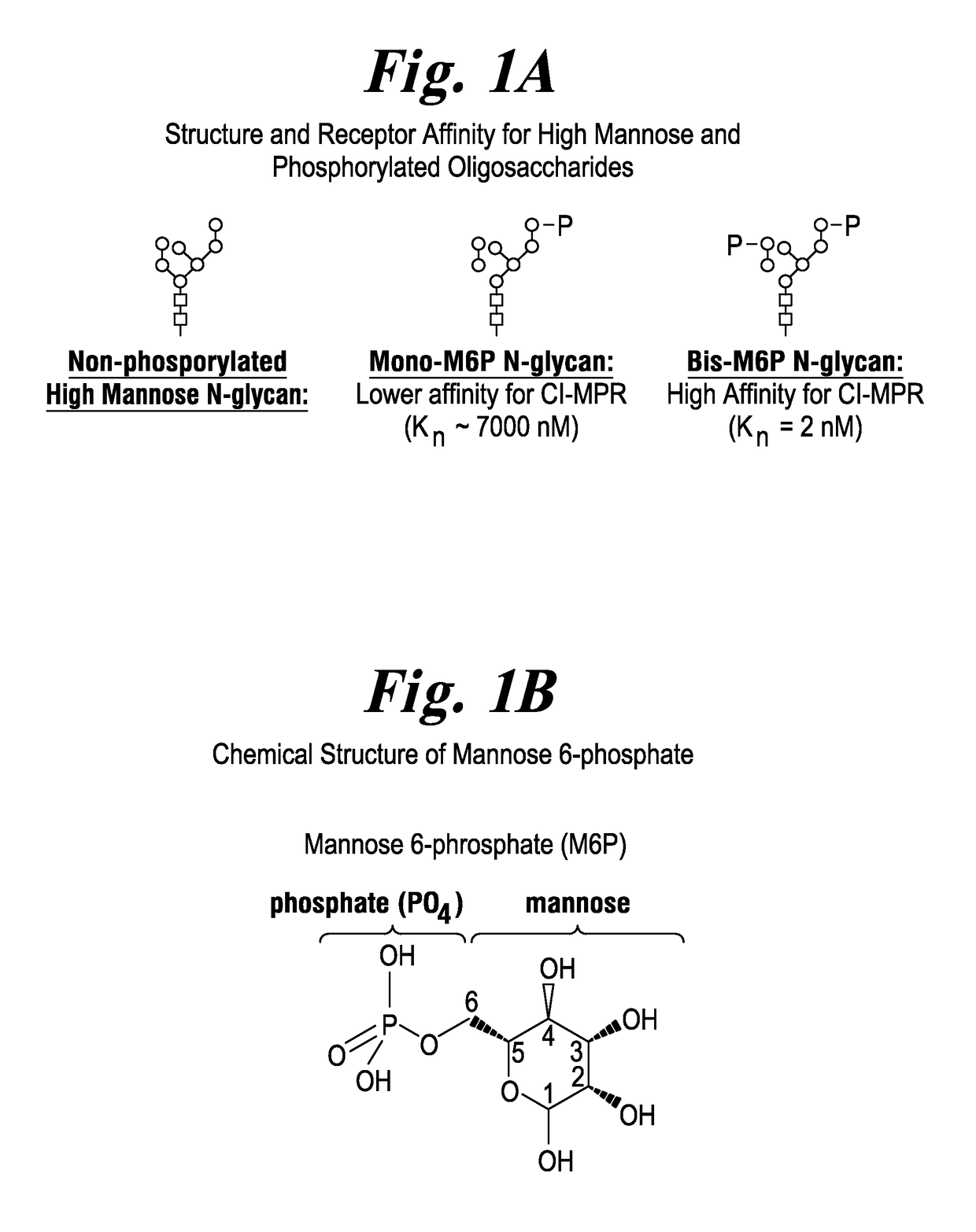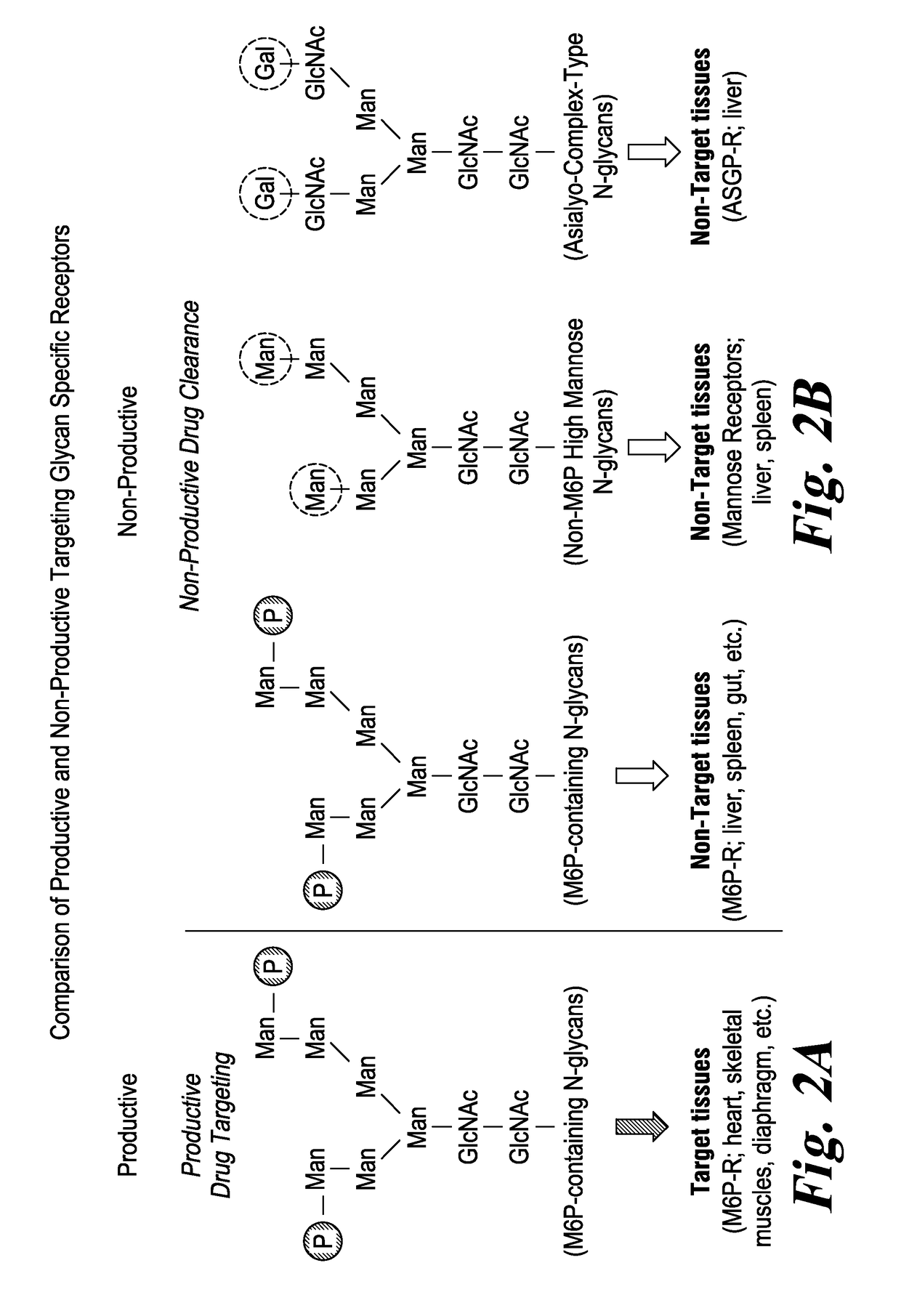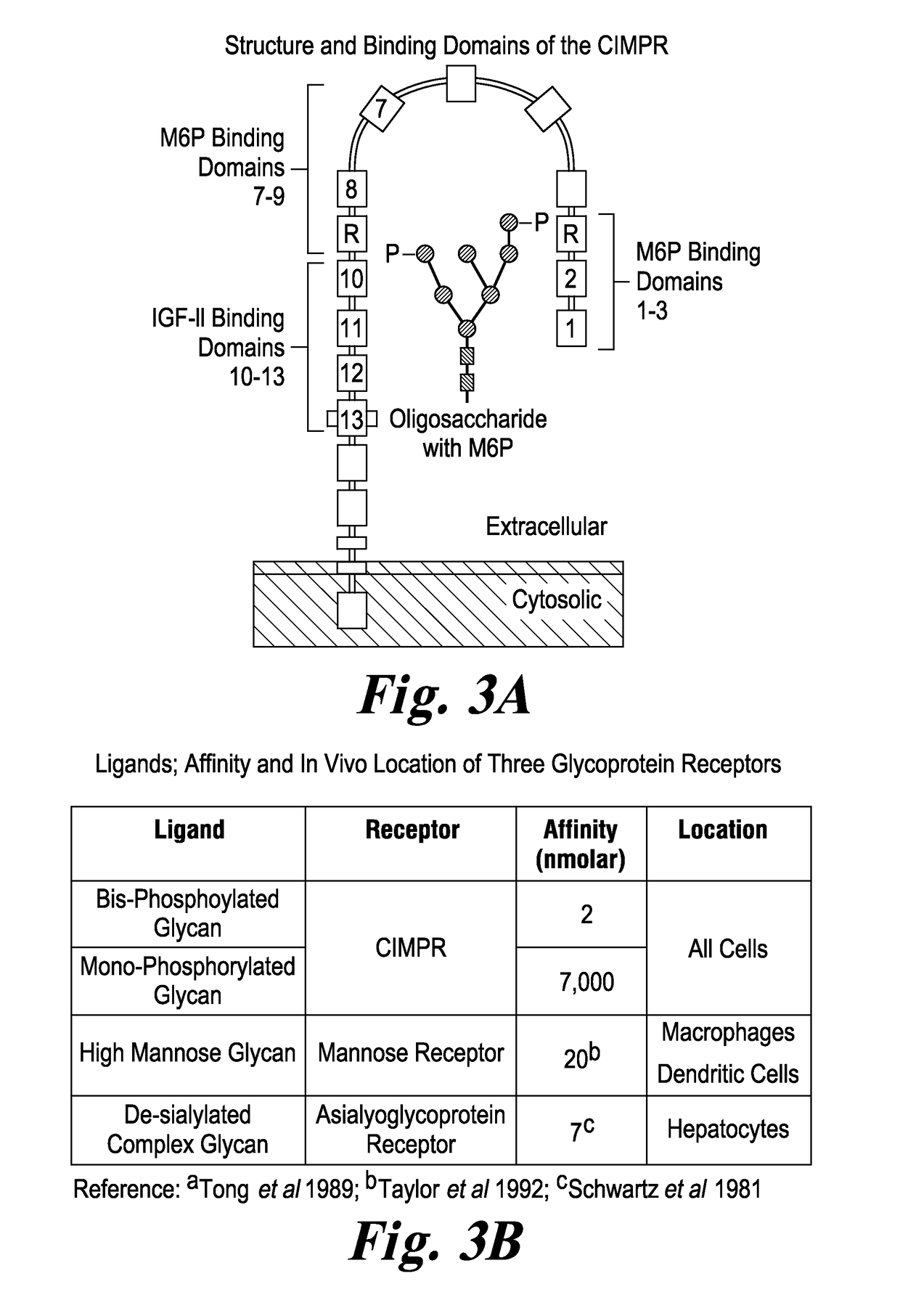Highly potent acid alpha-glucosidase with enhanced carbohydrates
a technology of alpha-glucosidase and enhanced carbohydrates, which is applied in the field of recombinant human alpha-glucosidase, can solve the problems of affecting the ability of cells to function normally, and affecting the ability of glycogen accumulation to damage muscle and nerve cells as well as those in other affected tissues, so as to minimize non-productive clearance of rhgaa and improve the effect of glucos
- Summary
- Abstract
- Description
- Claims
- Application Information
AI Technical Summary
Benefits of technology
Problems solved by technology
Method used
Image
Examples
examples
[0084]The following non-limiting Examples exemplify aspects of the invention.
Section I: ATB-200 rhGAA and its Properties
Limitations of Existing Myozyme® and Lumizyme® rhGAA Products
[0085]To evaluate the ability of the rhGAA in Myozyme® and Lumizyme®, the only currently approved treatments for Pompe disease, these rhGAA preparations were injected onto a CIMPR column (which binds rhGAA having M6P groups) and subsequently eluted with a free M6 gradient. Fractions were collected in 96-well plate and GAA activity assayed by 4MU-α-glucose substrate. The relative amounts of bound and unbound rhGAA were determined based on GAA activity and reported as the fraction of total enzyme.
[0086]FIG. 5 describes the problems associated with conventional ERTs (Myozyme® and Lumizyme®): 73% of the rhGAA in Myozyme® (FIG. 5B) and 78% of the rhGAA in Lumizyme® (FIG. 5A) did not bind to the CIMPR, see the left-most peaks in each figure. Only 27% of the rhGAA in Myozyme® and 22% of the rhGAA in Lumizyme® co...
PUM
| Property | Measurement | Unit |
|---|---|---|
| pH | aaaaa | aaaaa |
| pH | aaaaa | aaaaa |
| weight | aaaaa | aaaaa |
Abstract
Description
Claims
Application Information
 Login to view more
Login to view more - R&D Engineer
- R&D Manager
- IP Professional
- Industry Leading Data Capabilities
- Powerful AI technology
- Patent DNA Extraction
Browse by: Latest US Patents, China's latest patents, Technical Efficacy Thesaurus, Application Domain, Technology Topic.
© 2024 PatSnap. All rights reserved.Legal|Privacy policy|Modern Slavery Act Transparency Statement|Sitemap



